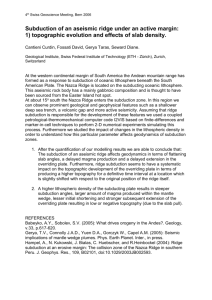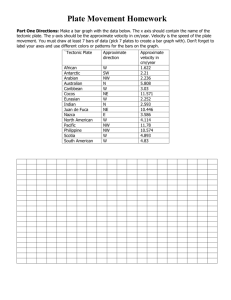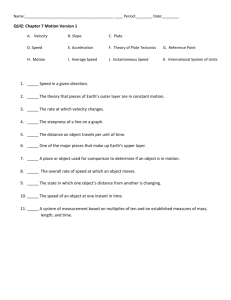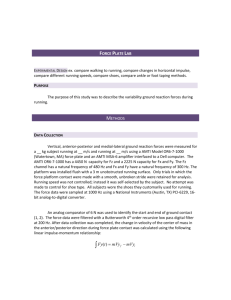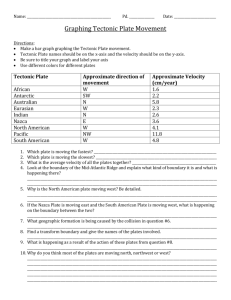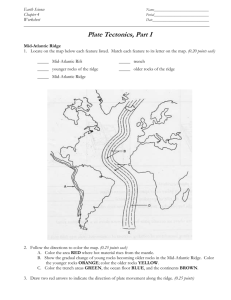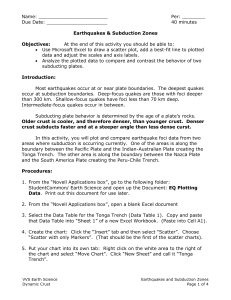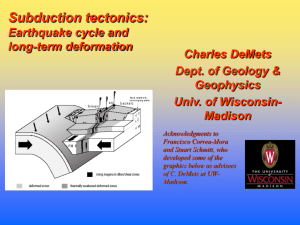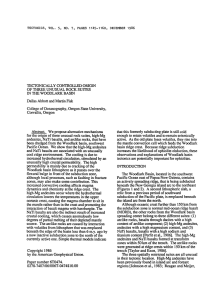Fossati_David_Poster - SWISS GEOSCIENCE MEETINGs
advertisement
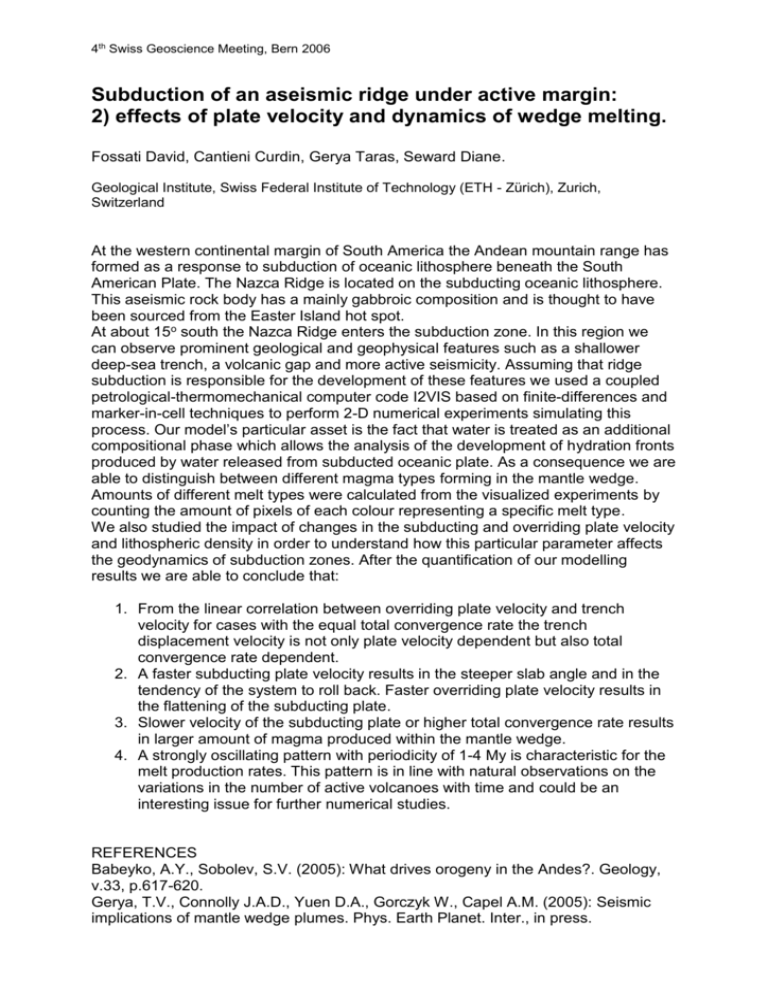
4th Swiss Geoscience Meeting, Bern 2006 Subduction of an aseismic ridge under active margin: 2) effects of plate velocity and dynamics of wedge melting. Fossati David, Cantieni Curdin, Gerya Taras, Seward Diane. Geological Institute, Swiss Federal Institute of Technology (ETH - Zürich), Zurich, Switzerland At the western continental margin of South America the Andean mountain range has formed as a response to subduction of oceanic lithosphere beneath the South American Plate. The Nazca Ridge is located on the subducting oceanic lithosphere. This aseismic rock body has a mainly gabbroic composition and is thought to have been sourced from the Easter Island hot spot. At about 15o south the Nazca Ridge enters the subduction zone. In this region we can observe prominent geological and geophysical features such as a shallower deep-sea trench, a volcanic gap and more active seismicity. Assuming that ridge subduction is responsible for the development of these features we used a coupled petrological-thermomechanical computer code I2VIS based on finite-differences and marker-in-cell techniques to perform 2-D numerical experiments simulating this process. Our model’s particular asset is the fact that water is treated as an additional compositional phase which allows the analysis of the development of hydration fronts produced by water released from subducted oceanic plate. As a consequence we are able to distinguish between different magma types forming in the mantle wedge. Amounts of different melt types were calculated from the visualized experiments by counting the amount of pixels of each colour representing a specific melt type. We also studied the impact of changes in the subducting and overriding plate velocity and lithospheric density in order to understand how this particular parameter affects the geodynamics of subduction zones. After the quantification of our modelling results we are able to conclude that: 1. From the linear correlation between overriding plate velocity and trench velocity for cases with the equal total convergence rate the trench displacement velocity is not only plate velocity dependent but also total convergence rate dependent. 2. A faster subducting plate velocity results in the steeper slab angle and in the tendency of the system to roll back. Faster overriding plate velocity results in the flattening of the subducting plate. 3. Slower velocity of the subducting plate or higher total convergence rate results in larger amount of magma produced within the mantle wedge. 4. A strongly oscillating pattern with periodicity of 1-4 My is characteristic for the melt production rates. This pattern is in line with natural observations on the variations in the number of active volcanoes with time and could be an interesting issue for further numerical studies. REFERENCES Babeyko, A.Y., Sobolev, S.V. (2005): What drives orogeny in the Andes?. Geology, v.33, p.617-620. Gerya, T.V., Connolly J.A.D., Yuen D.A., Gorczyk W., Capel A.M. (2005): Seismic implications of mantle wedge plumes. Phys. Earth Planet. Inter., in press. 4th Swiss Geoscience Meeting, Bern 2006 Hampel, A., N. Kukowski, J. Bialas, C. Huebscher, and R.Heinbockel (2004): Ridge subduction at an erosive margin: The collision zone of the Nazca Ridge in southern Peru. J. Geophys. Res., 109, B02101, doi:10.1029/2003JB002593.
